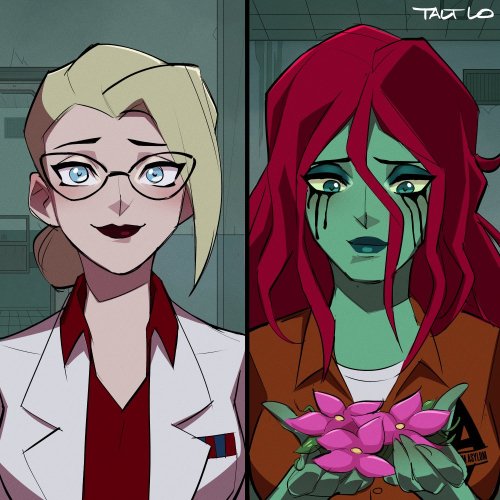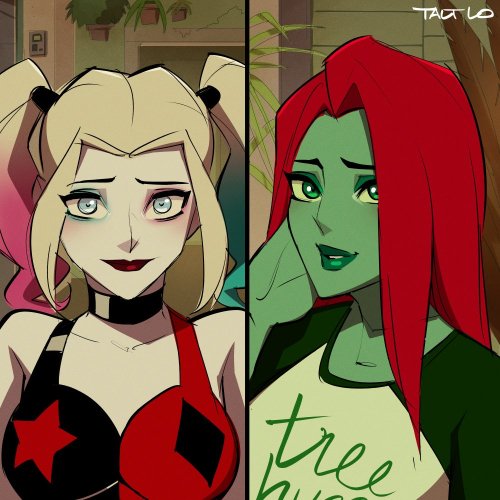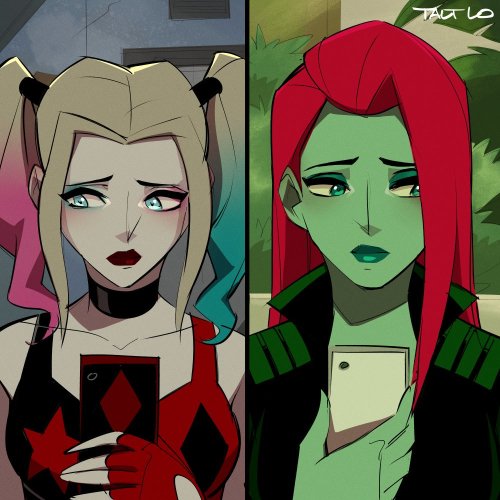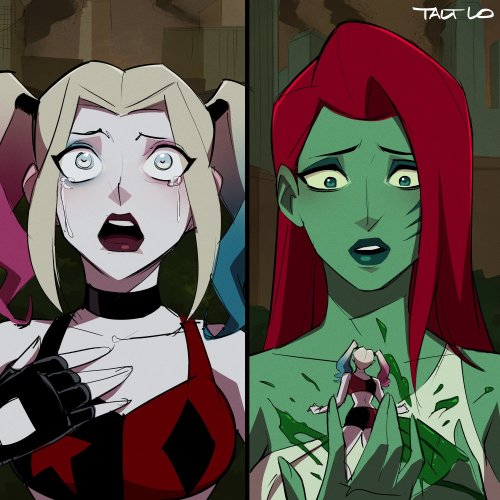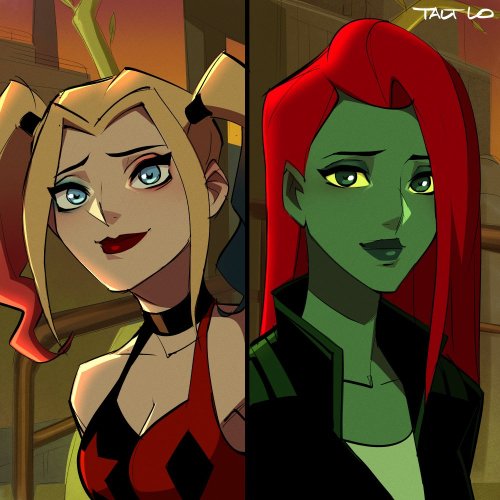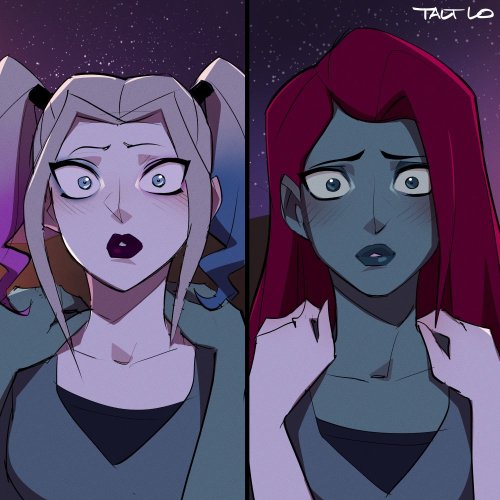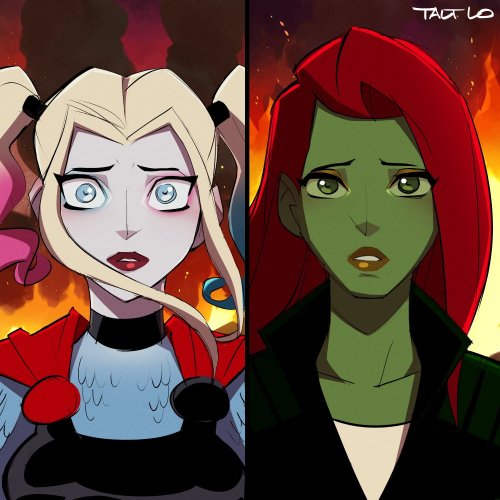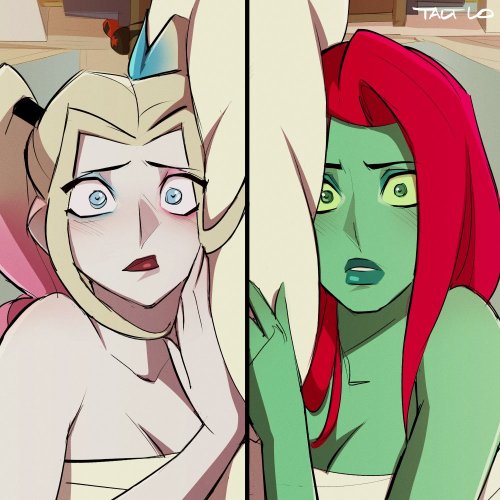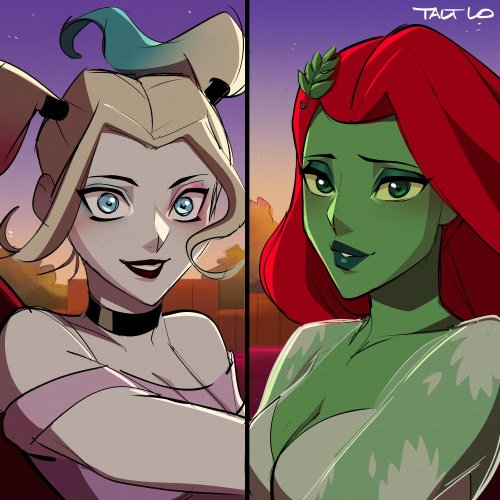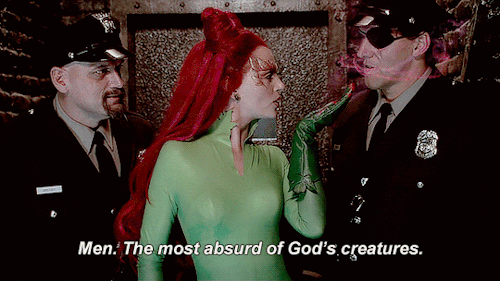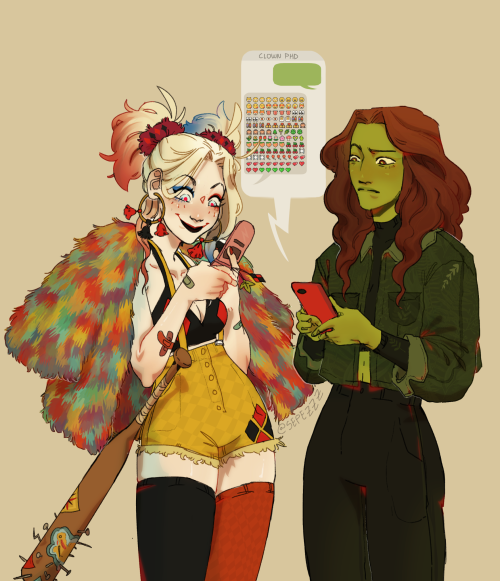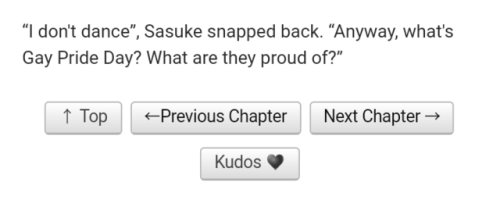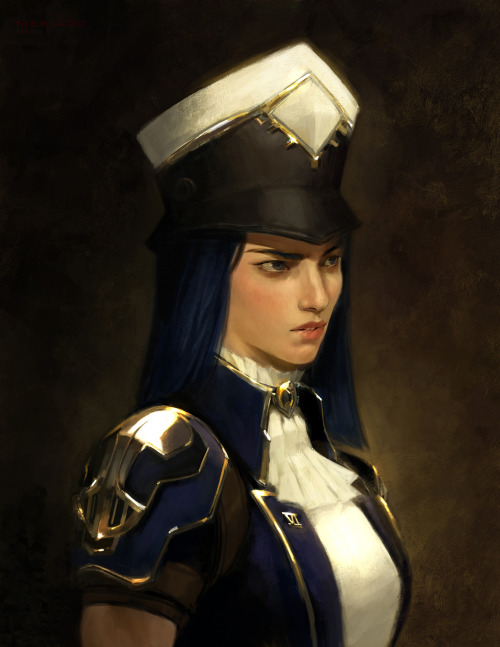Latest Posts by emilerry - Page 4
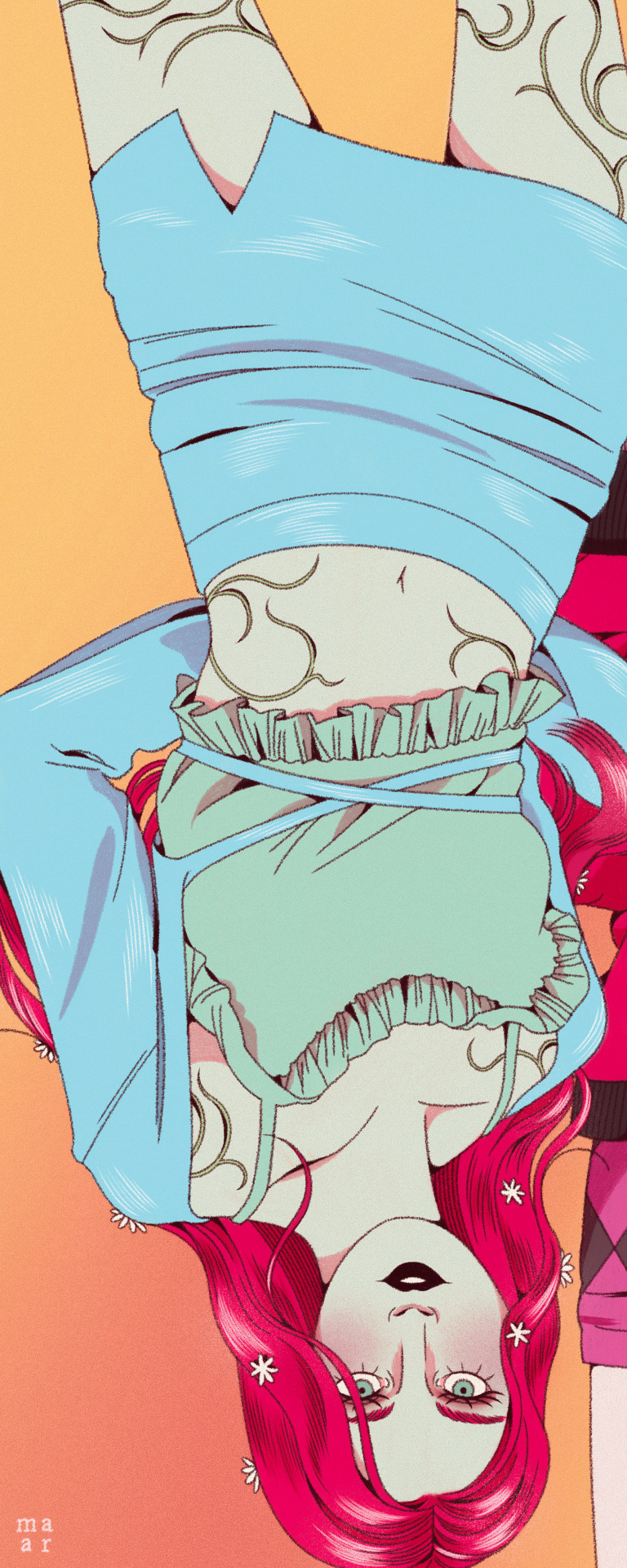
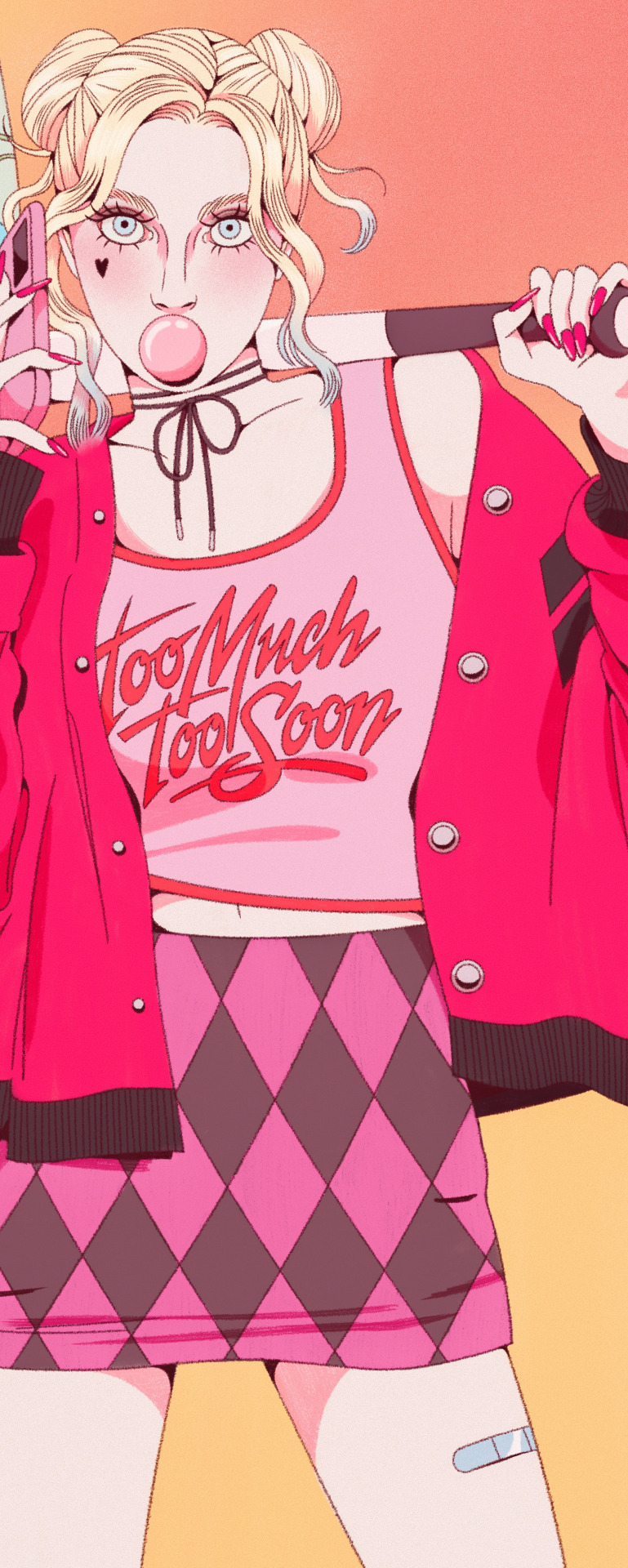
girls girls girls

Them ✨





Poison Ivy origin stories are so tired, I tried a new one where she gets to be the evil scientist first
this is explicitly a callout of neil gaiman’s god awful Poison Ivy story “Pavane”



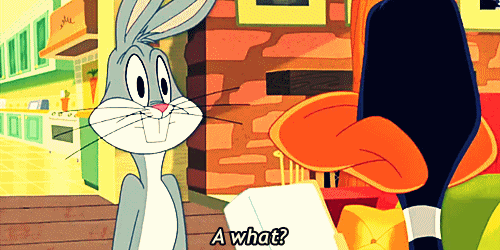
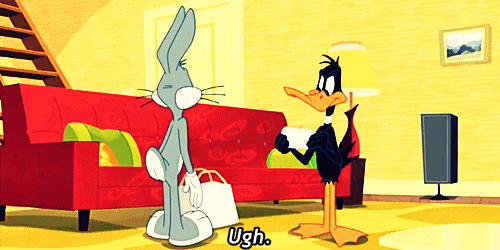
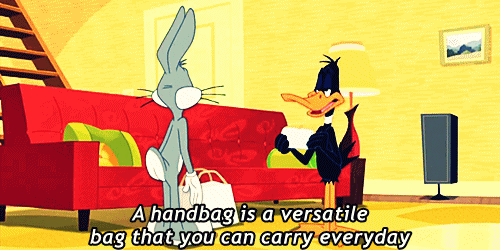
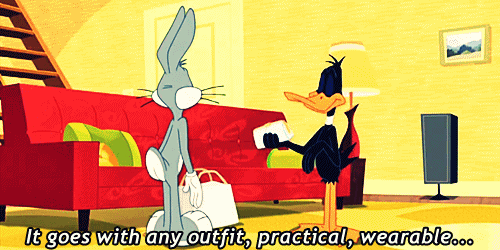
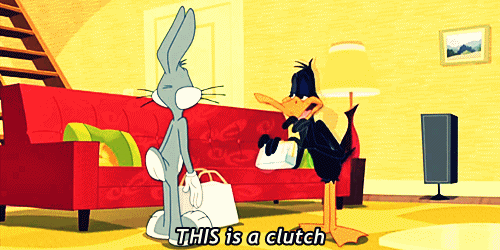
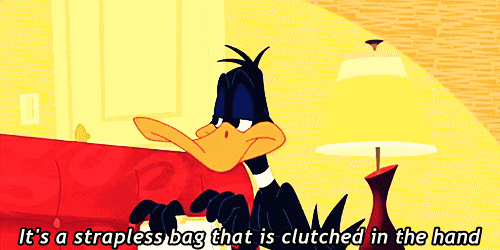
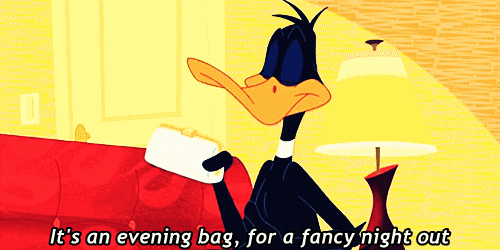
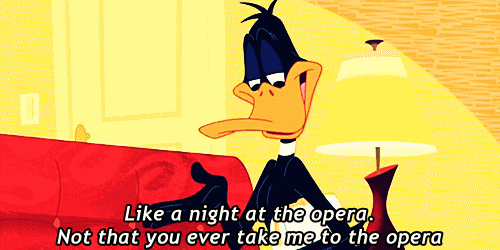
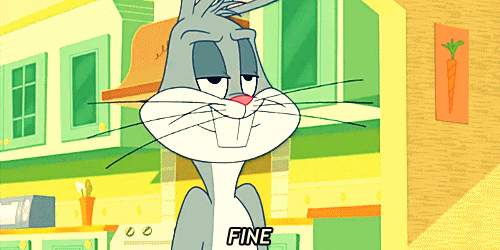
“It’s a handbag.”
the girlies, the girly girls

uhg life has been so busy n stressful lately, this is all ive got atm.
ive been working on a proto viktor design for a couple of days now n i have so many thoughts on it - just hate how people will just copy n paste lol viktor or make him an overly sexy, streamlined n well designed cyborg man when he wouldn't ,, look like that ?? be creative!! make him look clunky and vile !! that's like half the fun of proto viktor.


How to write kids, if you don't remember being one or haven't lived with any
1. Kids never feel as small as you see them. A three year old thinks a one year old is a baby and a six year old is grown up. A six year old thinks a three year old is a baby and a twelve year old is an adult. Age is about perspective. One year is a huge age difference to a little kid.
2. Little kids might not be conscious of their physical limitations, but they can still be frustrated by them. A seven year old might see an adult do something relatively simple, like draw a straight line or perfectly crack an egg, and try to do the same thing, only to be frustrated when it doesn't work.
Imagine suddenly having an injury that makes a skill you use every day become difficult- you feel you should be able to do the thing, and you understand the thing should be easy for you, but it isn't. It can be immensely frustrating to have a brain that grasps a concept that language or fine motor skills haven't caught up to.
3. You know when you forget a word, and have to make something up on the fly to describe the word? That's pretty much exactly what learning your first language is like.
You know what you intend, but you don't have a way to express it, and it can move you to tears with frustration when everyone around you is suggesting the wrong thing, or seems completely certain they understand what you mean, and they don't.
You don't have a word for "Later"? You might try saying "next time", or, "after", or, "before tomorrow".
This might result in saying, "Are we going to the park next time?", "Are we going to the park before tomorrow?", or, "Are we going to the park after?", all of which can result in different answers.
4. Kids feel like adults are a different species. They don't get why we do certain things, and they don't understand why we don't want to run around with them all the time.
If sitting still is boring, coffee tastes bitter, and long conversations only happen with weird-smelling strangers who talk to them like they're stupid, then they truly will not understand why anyone would *want* to be left to have coffee with a friend without welcome distractions to make it bearable.
Aren't you bored? You aren't doing anything. How could you possibly be stimulated without any food or toys or music or anything? Why don't you just leave? Do you *have* to be there, the way you had to go to work? Adults are weird.
5. Children have complex social relationships that are just as varied as yours.
A room full of third graders might look like indiscriminate chaos to an adult, but pick a well connected kid, and they'll tell you that Megan is the fashion icon who can do hair really well, Thomas is the athlete, Gray gets mean when he has to share so nobody wants to play with him, Paisley can't read and the boys make fun of her for it so don't make her work in a group with Anthony, Dillon put a bug in their food once so they'll never trust him again, and Matthew's parents let him watch family guy so he says bad words and makes grown-up jokes that make other kids uncomfortable.
You don't see this stuff because you aren't inside the society. They are, and they do.
6. Time. Moves. So. Slow. Five minutes really does feel like half an hour. Sit still for five minutes? That's like you sitting in a waiting room at the DMV for an hour. Wouldn't you get annoyed and impatient? They haven't learned to hide their irritation yet. That's really the only difference.
7. "Reading in your head" requires understanding that you have a Voice, which people can hear, and Thoughts, which are audible only to yourself. This can be a difficult concept to grasp. If a kid is reading out loud, and you tell them to read quietly, there's a good chance they're going to whisper or mouth the words instead of going totally silent the way you might. Splitting the self into multiples like "Internal monologue VS public perception" or "What I look like VS how I think I look" is alien and bizarre. If a kid thinks they look like a Dragon and you laugh at them? Ouch. They might be mad for a while.
8. Repetitive chores make no sense when your awareness of time doesn't extend beyond a week or so. Why should I wash my blankets? They don't look dirty and I don't smell anything bad. Blankets don't get dirty unless you put dirt on them. If you put a blanket in a washer, you can't use that blanket AT ALL the ENTIRE TIME it's being cleaned. That might be an hour, but it will *feel* like a week. And you have to do that every two weeks?? That's overkill. Why even bother?
9. Kids have opinions about adults. They will have a sense about whether an adult is "real-kind" or "fake-kind". An adult who listens respectfully to what they have to say, asks thoughtful questions, and takes their concerns seriously? That's a good adult. An adult that oversimplifies their struggles, ignores their complex social rules, and gives bullshit advice like "just walk away from bullies" and "turn your chores into a fun game"? That's not a trustworthy adult. That's an Adult™. An Adult™ doesn't consider them to be a real human being with thoughts and emotions. An Adult™ sees them as an inferior, amusing pet. And they will actively sabotage An Adult™ like that.
10. Emotions are physical at a young age. Joy might make their body buzz until they can't help but wiggle or jump around. Sadness might be a huge physical pain in their throat and heart. Everything they experience is still relatively.New to.them, so there is very little frame of reference to decide if this is a "big hurt that will last forever and ever and never go away", or a "small hurt, that can be fixed easily and won't matter in five minutes". If someone lies to them about getting a cookie, that very well might be all the betrayal of your best friend sleeping with your husband.
Fortunately, a child probably won't be able to burn all your clothes in the yard without your notice.

thinking abt this silly sponge // dont repost
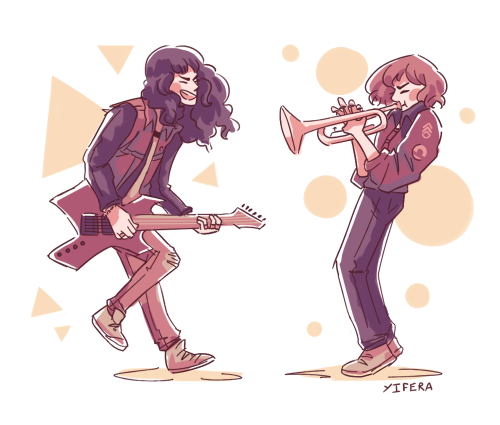
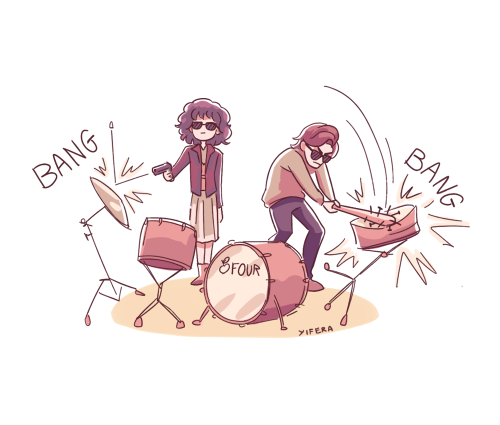
They are a band now
yeeeeouch! (<- me feeling pain from thinking about concepts and ideas)
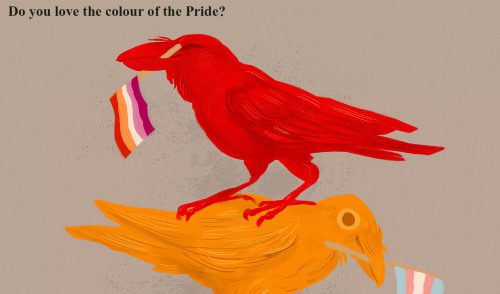

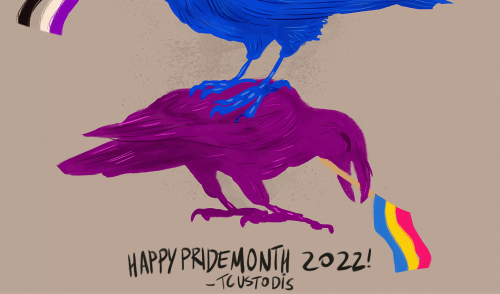
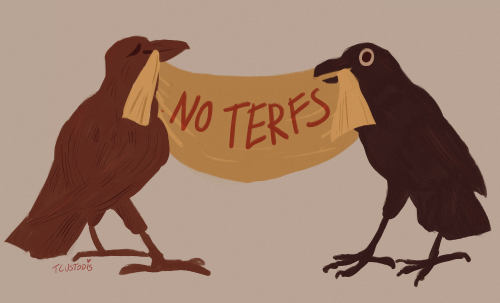
Happy Pride Month 2022!!!
Faust the Crow loves you even more than she did last year!
Arcane is fun in part because most of the men are like "I am so weak and feeble. I will get my way by using my cunning deception and my dastardly wiles" while most of the women are like "Kill you with violence. Kill you with my bombs kill you with my fists kill you with my mecha arm. I get my way because I kill you."

This is an ultimate masterlist of many resources that could be helpful for writers. I apologize in advance for any not working links. Check out the ultimate writing resource masterlist here (x) and my “novel” tag here (x).
✑ PLANNING
Outlining & Organizing
For the Architects: The Planning Process
Rough Drafts
How do you plan a novel?
Plot Development: Climax, Resolution, and Your Main Character
Plotting and Planing
I Have An Idea for a Novel! Now What?
Choosing the Best Outline Method
How to Write a Novel: The Snowflake Method
Effectively Outlining Your Plot
Conflict and Character within Story Structure
Outlining Your Plot
Ideas, Plots & Using the Premise Sheets
✑ INSPIRATION
Finding story ideas
Choosing ideas and endings
When a plot isn’t strong enough to make a whole story
Writing a story that’s doomed to suck
How to Finish What You Start: A Five-Step Plan for Writers
Finishing Your Novel
Finish Your Novel
How to Finish Your Novel when You Want to Quit
How To Push Past The Bullshit And Write That Goddamn Novel: A Very Simple No-Fuckery Writing Plan
✑ PLOT
In General
25 Turns, Pivots and Twists to Complicate Your Story
The ABCs (and Ds and Es) of Plot Development
Originality Is Overrated
How to Create a Plot Outline in Eight Easy Steps
Finding Plot: Idea Nets
The Story Goal: Your Key to Creating a Solid Plot Structure
Make your reader root for your main character
Creating Conflict and Sustaining Suspense
Tips for Creating a Compelling Plot
The Thirty-six (plus one) Dramatic Situations
Adding Subplots to a Novel
Weaving Subplots into a Novel
7 Ways to Add Subplots to Your Novel
Crafting a Successful Romance Subplot
How to Improve your Writing: Subplots and Subtext
Understanding the Role of Subplots
How to Use Subtext in your Writing
The Secret Life of Subtext
How to Use Subtext
Beginning
Creating a Process: Getting Your Ideas onto Paper (And into a Story)
Why First Chapters?
Starting with a Bang
In the Beginning
The Beginning of your Novel that isn’t the Beginning of your Novel
A Beginning from the Middle
Starting with a Bang
First Chapters: What To Include @ The Beginning Writer
23 Clichés to Avoid When Beginning Your Story
Start Writing Now
Done Planning. What Now?
Continuing Your Long-Format Story
How to Start a Novel
100 best first lines from novels
The First Sentence of a Book Report
How To Write A Killer First Sentence To Open Your Book
How to Write the First Sentence of a Book
The Most Important Sentence: How to Write a Killer Opening
Hook Your Reader from the First Sentence: How to Write Great Beginnings
Foreshadowing
Foreshadowing and the Red Hering
Narrative Elements: Foreshadowing
Foreshadowing and Suspense
Foreshadowing Key Details
Writing Fiction: Foreshadowing
The Literary Device of Foreshadowing
All About Foreshadowing in Fiction
Foreshadowing
Flashbacks and Foreshadowing
Foreshadowing — How and Why to Use It In Your Writing
Setting
Four Ways to Bring Settings to Life
Write a Setting for a Book
Writing Dynamic Settings
How To Make Your Setting a Character
Guide for Setting
5 Tips for Writing Better Settings
Building a Novel’s Setting
Ending
A Novel Ending
How to End Your Novel
How to End Your Novel 2
How to End a Novel With a Punch
How to End a Novel
How to Finish a Novel
How to Write The Ending of Your Novel
Keys to Great Endings
3 Things That End A Story Well
Ending a Novel: Five Things to Avoid
Endings that Ruin Your Novel
Closing Time: The Ending
✑ CHARACTER
Names
Behind the Name
Surname Meanings and Origins
Surname Meanings and Origins - A Free Dictionary of Surnames
Common US Surnames & Their Meanings
Last Name Meanings & Origins
Name Generators
Name Playground
Different Types of Characters
Ways To Describe a Personality
Character Traits Meme
Types of Characters
Types of Characters in Fiction
Seven Common Character Types
Six Types of Courageous Characters
Creating Fictional Characters (Masterlist)
Building Fictional Characters
Fiction Writer’s Character Chart
Character Building Workshop
Tips for Characterization
Fiction Writer’s Character Chart
Advantages, Disadvantages and Skills
Males
Strong Male Characters
The History and Nature of Man Friendships
Friendship for Guys (No Tears!)
‘I Love You, Man’ and the rules of male friendship
Male Friendship
Understanding Male Friendship
Straight male friendship, now with more cuddling
Character Development
P.O.V. And Background
Writing a Character: Questionnaire
10 Days of Character Building
Getting to Know Your Characters
Character Development Exercises
✑ STYLE
Chapters
How Many Chapters is the Right Amount of Chapters?
The Arbitrary Nature of the Chapter
How Long is a Chapter?
How Long Should Novel Chapters Be?
Chapter & Novel Lengths
Section vs. Scene Breaks
Dialogue
The Passion of Dialogue
25 Things You Should Know About Dialogue
Dialogue Writing Tips
Punctuation Dialogue
How to Write Believable Dialogue
Writing Dialogue: The Music of Speech
Writing Scenes with Many Characters
It’s Not What They Say …
Top 10 Tips for Writing Dialogue
Speaking of Dialogue
Dialogue Tips
Interrupted Dialogue
Two Tips for Interrupted Dialogue
Show, Don’t Tell (Description)
“Tell” Makes a Great Placeholder
The Literary Merit of the Grilled Cheese Sandwich
Bad Creative Writing Advice
The Ultimate Guide to Writing Better Than You Normally Do
DailyWritingTips: Show, Don’t Tell
GrammarGirl: Show, Don’t Tell
Writing Style: What Is It?
Detail Enhances Your Fiction
Using Sensory Details
Description in Fiction
Using Concrete Detail
Depth Through Perception
Showing Emotions & Feelings
Character Description
Describing Your Characters (by inkfish7 on DeviantArt)
Help with Character Development
Creating Characters that Jump Off the Page
Omitting Character Description
Introducing Your Character(s): DON’T
Character Crafting
Writer’s Relief Blog: “Character Development In Stories And Novels”
Article: How Do You Think Up Your Characters?
5 Character Points You May Be Ignoring
List of colors, hair types and hairstyles
List of words to use in a character’s description
200 words to describe hair
How to describe hair
Words used to describe the state of people’s hair
How to describe your haircut
Hair color sharts
Four Ways to Reveal Backstory
Words Used to Describe Clothes
Flashbacks
Using Flashbacks in Writing
Flashbacks by All Write
Using Flashback in Fiction
Fatal Backstory
Flashbacks as opening gambit
Don’t Begin at the Beginning
Flashbacks in Books
TVTropes: Flashback
Objects in the Mirror Are Closer Than They Appear: Flashback Techniques in Fiction
3 Tips for Writing Successful Flashbacks
The 5 Rules of Writing Effective Flashbacks
How to Handle Flashbacks In Writing
Flashbacks and Foreshadowing
Reddit Forum: Is a flashback in the first chapter a good idea?
Forum Discussing Flackbacks
P.O.V
You, Me, and XE - Points of View
What’s Your Point of View?
Establishing the Right Point of View: How to Avoid “Stepping Out of Character”
How to Start Writing in the Third Person
The Opposite Gender P.O.V.
LANGUAGE
How To Say Said
200 Words Instead of Said
Words to Use Instead of Said
A List of Words to Use Instead of Said
Alternatives to “Walk”
60 Synonyms for “Walk”
✑ USEFUL WEBSITES/LINKS
Grammar Monster
Google Scholar
GodChecker
Tip Of My Tounge
Speech Tags
Pixar Story Rules
Written? Kitten!
TED Talks
DarkCopy
Family Echo
Some Words About Word Count
How Long Should My Novel Be?
The Universal Mary Sue Litmus Test
Writer’s “Cheat Sheets”
Last but not least, the most helpful tool for any writer out there is Google!
Resources for Writing Injuries

Patreon || Ko-Fi || Masterlist || Work In Progress
–
Head Injuries
General Information | More
Hematoma
Hemorrhage
Concussion
Edema
Skull Fracture
Diffuse Axonal Injury
Neck
General Information
Neck sprain
Herniated Disk
Pinched Nerve
Cervical Fracture
Broken Neck
Chest (Thoracic)
General Information
Aortic disruption
Blunt cardiac injury
Cardiac tamponade
Flail chest
Hemothorax
Pneumothorax (traumatic pneumothorax, open pneumothorax, and tension pneumothorax)
Pulmonary contusion
Broken Ribs
Broken Collarbone
Abdominal
General Information
Blunt trauma
Penetrating injuries (see also, gunshot wound & stab wound sections)
Broken Spine
Lung Trauma
Heart (Blunt Cardiac Injury)
Bladder Trauma
Spleen Trauma
Intestinal Trauma
Liver Trauma
Pancreas Trauma
Kidney Trauma
Arms/Hands/Legs/Feet
General Information | More
Fractures
Dislocations
Sprains
Strains
Muscle Overuse
Muscle Bruise
Bone Bruise
Carpal tunnel syndrome
Tendon pain
Bruises
Injuries to ligaments
Injuries to tendons
Crushed Hand
Crushed Foot
Broken Hand
Broken Foot
Broken Ankle
Broken Wrist
Broken Arm
Shoulder Trauma
Broken elbow
Broken Knee
Broken Finger
Broken Toe
Face
General Information
Broken Nose
Corneal Abrasion
Chemical Eye Burns
Subconjunctival Hemorrhages (Eye Bleeding)
Facial Trauma
Broken/Dislocated jaw
Fractured Cheekbone
Skin & Bleeding
General Information (Skin Injuries) | More (Arteries)
femoral artery (inner thigh)
thoracic aorta (chest & heart)
abdominal aorta (abdomen)
brachial artery (upper arm)
radial artery (hand & forearm)
common carotid artery (neck)
aorta (heart & abdomen)
axillary artery (underarm)
popliteal artery (knee & outer thigh)
anterior tibial artery (shin & ankle)
posterior tibial artery (calf & heel)
arteria dorsalis pedis (foot)
Cuts/Lacerations
Scrapes
Abrasions (Floor burns)
Bruises
Gunshot Wounds
General Information
In the Head
In the Neck
In the Shoulders
In the Chest
In the Abdomen
In the Legs/Arms
In the Hands
In The Feet
Stab Wounds
General Information
In the Head
In the Neck
In the Chest
In the Abdomen
In the Legs/Arms
General Resources
Guide to Story Researching
A Writer’s Thesaurus
Words To Describe Body Types and How They Move
Words To Describe…
Writing Intense Scenes
–
Masterlist | WIP Blog
If you enjoy my blog and wish for it to continue being updated frequently and for me to continue putting my energy toward answering your questions, please consider Buying Me A Coffee, or pledging your support on Patreon, where I offer early access and exclusive benefits for only $5/month.
Shoutout to my $15+ patrons, Jade Ashley and Douglas S.!
writing characters with one eye
i can pretty much guarantee that ↑that↑ is not a heading you see everyday.
now i will not be giving advice on writing cyclopses, (though it may be sort of the same thing) i still hope this will be helpful for some people out there that are looking to provide a more diverse cast to their wip!
i have never ever ever read a book, watch a show movie etc etc that involves a character with one eye. (aside from those badass characters who wear eye patches bc they lost sight in one eye in some badass way)
for context: i am one of many people who was born with microphtalmia, an eye disease that results in one or both eyes develope smaller than normal at birth. i myself was born with a smaller left eye, which resulted in my left eye being removed exactly twenty days after birth.
microphthalmia (along with many other eye diseases) typically leads to being half or fully blind. i lucked out and only lost my left eye which i am so so thankful for.
i would really really love to see more representation for my community in literature, especially so people would come to see that being half blind isn’t as unusual and weird as people make it out to be.
without further ado, i present to you, a list of information, facts, and first hand experiences from yours truly!
i’ve had prosthetic eyes made to fit my eye socket for about fifteen years (i’m 16 lol) (the first 6ish months after the surgery i never had a prosthetic)
in my life i’ve had four different prosthetic eyes made because just like other people, my eye socket grew alongside the rest of me, meaning the prosthetic needed to be made bigger
i’ve had my current prosthetic for four years now, the past ones lasted about 2-3 years at a time. this one will probably last me through the rest of my life unless i need/want a new one
as opposed to most media/assumptions, my prosthetic (along with most prosthetics) is PLASTIC (people always think it’s glass) and only half a circle!!
i’ve had three surgeries related to my eye
i do not have depth perception which makes doing certain things very difficult (estimating distance, how close/far i am from something etc)
driving is not affected too much, i just have to turn my head more than other people. i believe being blind in the right eye might be more difficult, but i couldn’t say
doing my make up is kinda easy, except for eyeliner is a pain in the ASS since most people close their eye to do it on their upper lid, but clearly i can’t close my right eye whilst doing it lol
my family as well as my friends and even myself often forget i have a prosthetic, which sometimes results in awkward/funny situations
i hate walking with people on my right bc i can’t tell where they are unless i’m constantly looking down at my/their feet
i sucked at basketball bc i had such a disadvantage (no depth perception, i could only see half the court, i was constantly turning my head) but professional swimming is much easier for me since it’s not a contact sport and doesn’t really require for me to be paying attention to a million things at once
i rarely have to take my prosthetic out, and if i do, it’s either to clean it, (we do get eye crusties on our prosthetics just like other people do when they have pink eye or sever allergies) it’s bothering me/really dry, or i want to take it out to show/scare people lol
a lot of people don’t realize when i first meet them that it’s fake bc my recent prosthetic is amazing accurate to my real eye. others notice and assume i have a lazy eye since it doesn’t move
for some reason people think i can’t cry out of my left (prosthetic) eye??? i still have a tear duct??? i actually think more tears come out of my left tear duct than my right lol
i am extremely self conscious about it, but i know there are other one-eyed beauties out there who aren’t which is amazing!! i try to live vicariously through them lol
i make sooo many jokes about my eye lol, and i’m usually ok w other people making jokes as long as they aren’t like overly rude/offensive, then i’ll feel a lil bad about my self
people never really made fun of it, but kids in middle school likes to wave things in front of my left eye/on my left side that i couldn’t see which got really annoying after a while
getting custom designed prosthetics are available, but they’re really expensive (so are normal lol) they costs thousands of dollars, just like other prosthetics do
i run into things that are on my left side ALL THE TIME it’s actually kinda funny lolol
i try to hide my left eye/turn more to my left side in photos bc my eyes aren’t always looking in the same direction, which really gets to me
i wear glasses for both protection and bc my right eye is -1.75 lmao but i did used to wear non-prescription glasses purely for safety
i do have contacts to wear during the summer, swim meets etc, for when i don’t want/can’t wear my glasses but need to see. bc of this, i have a second pair of glasses that have no prescription
if doctors/scientists managed to figure out a way to fix microphthalmia (a birth defect), or do a sort of eye transplant, i would not be able to have that done to me because all parts of my left eye have been removed from my body
microphthalmia is NOT the only disease that results in the haver losing sight in one or both eyes!! there are many others, but it is not my place to share any experiences for something i have not experienced!!!
for once i just want to see a clumsy character who has one eye that WASNT a result of some tragic event.
so please please please consider including a character with one working eye in your wip. it would mean the world to myself and all the other members of the community (there’s a lot of us, trust me) plus, i wouldn’t mind starting an acting debut playing a half-blind female protagonist, that would be so dope.
that’s about all i can think of for now! please send an ask or reply to this post if you have any questions, i’m willing to answer any!!! and if you happen to be a member of the one eye club, please add to this post!! that would mean the world to me:)
Trope Discussion: Blind Characters Covering Their Eyes
The majority of the projects I am asked to beta include blind characters who cover their eyes. Modern characters wear sunglasses. Other characters wear blindfolds for older settings. The story usually justifies the decision in some way, but I always ask: why?
I also neglected to include this in my post on Things I Want to See More of / Less of in Blind Characters. I don’t think I considered it at the time. However, unlike my post on blind seers, I think this trope actually causes some harm in subtle ways and I usually encourage avoiding it. I’ll discuss why in this post.
What’s Wrong With Blind Characters Covering Their Eyes?
Keep in mind that blind characters are not so common. Because they aren’t very common and because not everyone in your audience knows a blind person in real life, the way the character is represented could lead audiences to believe that is how blind people are. This, coupled with a general lack of information given in everyday life, allows writers or artists to unintentionally influence how real life blind people are perceived.
Sure, blind people create blind characters as well. However, we don’t usually get as much exposure or opportunities. We could be held back by other barriers, such as poverty. This means it can be hard to counteract tropes we don’t like or that activity harm us.
Blind characters covering their eyes is potentially harmful for a few reasons.
One reason is that it is assumed that all blind people always cover their eyes. This means that in real life, blind people are not as easily recognized even when they have a cane. The white cane is supposed to be what alerts others that a person is blind. Instead, people get confused about why a blind person isn’t wearing sunglasses if they’re blind. This leads to unnecessary explanations, lost time, refusal to help, and sometimes hostility. Wearing sunglasses helps some blind people communicate blindness more easily. They may feel forced to adopt the stereotype.
Another reason is that it unknowingly touches on the pressure some blind people face to cover their eyes. This could be because they are self-conscious about them or because of pressure to make other people feel more comfortable. This pressure could originate from the way their eyes look or move, or even due to lack of eye contact. Sometimes, stories present these ideas as normal for blind people, which increases the idea that blind people should be ashamed of their eyes or that they should prioritize the comfort of others for something superficial.
Where Did the Stereotype Come From?
While I am not sure about the exact origins, the stereotype probably comes from a few sources: shorthand symbolism and abled actors playing blind characters.
-Shorthand symbolism could be used in art or plays to indicate a character’s blindness.
-Because films and shows are so popular and more easily consumed, audiences are more often exposed to blind people on the screen. Actors who aren’t blind often wear sunglasses to make them appear blind to audiences who would perceive eye movements as breaking character. The actors in live-action material often wear sunglasses to hide their eyes. Why blind actors aren’t hired initially is another story.
This page discusses the sunglasses trope in films.
-Some blind people who wear sunglasses for any reason may also simply be more recognizable as a blind person as opposed to blind people who don’t wear sunglasses. This means others may not be aware that blind who don’t wear dark sunglasses exist.
The Sunglasses Stereotype
I should mention here that blind people are simultaneously expected to wear sunglasses as a signifier of blindness while also accused of faking for wearing them. The rationale is the idea that blind people can’t see the sun and therefore would never need sunglasses. This, of course, depends on the stereotypes that all blind people are totally blind, which is not true. Most sources I have found over my time writing this blog state that less than 10 to 15% of blind people are totally blind, which means about 85 to 90% of blind people have light perception or some residual vision.
When Should Our Characters Wear Sunglasses or a Blindfold?
Many writers have characters cover their eyes because it feels right. Some assume the character would feel uncomfortable with the way their eyes look and that they prefer to hide them. In order to write this trope well, you must understand your reason behind it.
Let’s examine why blind people wear sunglasses in real life. This page is a good one to read and was very helpful in constructing this post.
Light sensitivity, or photophobia, occurs when people have sensitivity to light, usually sunlight. Blind people can also expirience this.
Sunglasses are used to shield their eyes from the sun when outdoors and from big windows when indoors. Some sources state synthetic lighting is not usually an issue and others state some people may want to wear their sunglasses indoors.
For characters who aren’t modern, the equivalent of sunglasses would probably be a blindfold or eye patch.
Blind people like fashion just as the next person. They might enjoy wearing sunglasses occasionally. However, they don’t wear them all the time.
Blind people might also want to protect their eyes from dust or injury, whether they can see or not. This can be accomplished with sunglasses or regular glasses.
How Do We Write Blind Characters Covering Their Eyes Respectfully?
This is one of those tropes I prefer people avoid. I say “avoid” because I want to come across it less which means way less people need to use it.
Think about why you want your blind character to cover their eyes.
Is it because it simply feels right to you? Is it because you believe it will help audiences understand or accept that your character is blind? Is it because you can’t imagine your character any other way? Is it because your feel deep down that your character’s eyes would make other characters uncomfortable?
Think about where this idea comes from and whether you really want to use it.
If you have decided it makes sense for your character to cover their eyes, here are some tips for you to do it well.
1. If they use sunglasses for fashion, have the blind character go without the accessory periodically throughout the story. Consider avoiding them covering their eyes when they are first introduced, as first impressions can be memorable. Your blind character should not be the only one who happens to wear sunglasses as part of their style.
2. If they are sensitive to light, do research on photophobia. Consider where the character is when covering their eyes. Do they mostly wear sunglasses outside and near big windows? Do screens bother them? Make it clear in the story.
3. I always suggest having more than one blind character in a story. This is important for moments such as this. Having a blind character who doesn’t cover their eyes shows that not all blind people cover their eyes. This, in addition to a writer understanding exactly why their character covers their eyes, will help immensely.
This trope is a problem when no reference to the alternative is made, usually because the writer doesn’t understand what they’re writing about. They haven’t considered the reasons blind people cover their eyes and therefore aren’t aware that not all blind people do so. Having more than one blind character in the story shows more than one experience, including covering or not covering eyes. Showing different experiences eliminates the idea that blind people “just do” certain things. It makes people think.
If you want audiences to think, you first need to ask: why?
When writing marginalized characters, remember that their marginalization decreases the amount of accurate information available about them. Audiences don’t have as many resources to check. They may even lack the inclination to do so at all. This could be because of a desire to maintain biases or simply because they don’t consider blind people much outside of entertainment or pity. Surprisingly, some people are even actively resistant or hostile to the idea of taking time to learn about the experiences of blind people.
This means your story could be more impactful than you realize.
When you’re writing, ask yourself the question: why? You might realize that it makes for a richer, more informed story.
Writer's Guide: Writing about Alcoholic Drinks and Cocktails

Or how to write believable bar and nightclub scenes. I often find myself helping friends with their WIPs and often it as a bartender, I find myself having to correct them on bar and mixology terminology. So here's my quick guide to keeping your lingo on the straight and narrow.
Terminology

DASH/SPLASH: a drop of a mixer such as juice or flavouring.
MIXER: non alcholic beveraged served with the measure of alcohol in the same glass.
NEAT: Plain, without any addition of ice or a mixture. Just the alcohol.
ON THE ROCKS: Served over Ice.
STRAIGHT UP: The cocktail is chilled with ice and strained into a glass with no ice
DIRTY – if somebody asks for a dirty martini, you add olive juice, the more juice the dirtier it is
DRY- A dry martini includes a drop of vermouth and an extra dry martini contains a drop of scotch swirled in the glass and drained before adding the gin
BACK – a ‘back’ is a drink that accompanies an alcholic beverage such as water or Coke, but isn't mixed.
GARNISH – something added to a drink such as a lime or lemon or orange.
TWIST - a twist is literally a twist of fruit skin in the drink.
BITTERS – a herbal alcoholic blend added to cocktails.
RIMMED - the glass is coated in salt or sugar to enhance the taste.
VIRGIN- non alcoholic
MOCKTAIL- a virgin cocktail
DOUBLE - Two measures of the same alcohol in the same glass. A bartender can only legally serve a double in the same glass. They cannot serve you a triple.
Equipment

COCKTAIL SHAKER - it is a metal cup that fits into a glass, used to shake the components of your drink together with ice to chill it.
STRAINER- used to seperate ice in the shaker from the liquid within as you pour it into the glass.
MEASURES- these are little metal cylinders meant to measure out the pours of the alcohol. You pour the alcohol from the bottle into the measure and then put it into the glass. It's imperative that the right measure goes into the glass or the drink will taste of shit.
BAR SPOON – a long spoon meant to mix the drink.
OPTIC- it is a mechanism that attaches a bottle to an automatic pourer. The bartender usually fits the glass under the spout and pushes up to release the amount which cuts off at the single measure.
SHOT GLASS- a shot glass is a small glass to contain one measure
PINT GLASS- a glass used for serving pints of lager or ale
HALF PINT GLASS - a tulip shaped glass half the measure of a pint glass
SPEEDWELL/TAPS/DRAFT: are the taps used to pour beer from kegs stored under the bar floor.
SLIM JIM/HIGH BALL GLASS- It is a tall straight holding 8 to 12 ounces and used for cocktails served on the rocks such as a Gin and Tonic.
ROCKS GLASS - or an old fashioned glass, it is short and round. These glasses are used for drinks such as Old Fashioneds or Sazerac
COUPE GLASS- Are broad round stemmed glasses used for cocktails that are chill and served without ice such as a Manhattan, Boulevardier or a Gimlet
MARTINI GLASS - a martini glass is that classic stemmed "v" shaped glass, used to serve drinks without mixers such as Martini and Cosmopolitans
MARGARITA GLASS - is a large, round bowl like glass with a broad and a tall stem used for Margaritas and Daiquiris
HURRICANE GLASS- a tall tulip-like shaped glass with a flared rim and short stem. It holds 20 ounces which means it is the perfect glass to serve iced cocktails in such as Pina Colada, Singapore Sling, Hurricane
Alcoholic Drinks

Vodka- Vodka is made from potatoes or fermented cereal grains. It has a strong taste and scent. It is usually consumed neat with a mixer such as Coke or Orange juice or cranberry juice or in cocktails like Martini, Bloody Mary and Cosmopolitan.
Whisky/Whiskey- Whiskey is a distilled alcoholic beverage, made from fermented grain mash such as barley, corn, rye, and wheat. It gets its flavour form being fermented in casks for long period of time. When serving a whiskey, one asks whether they want ice or a mixer. Everyone has their own preference. I prefer mine like myself, strong and Irish. Scotch is Scottish Brewed whisky.
Rum- Rum is made by fermenting and distilling sugarcane molasses/juice. It is aged in oak barrels. It has a sweet taste.
Beer: is made out of cereal grains and served chilled in bottles or pulled from taps/speedwells.
Ale: Ale in the middle ages referred to beer brewed without hops (a kind of flowering plant that gives beer its bitter taste). It is sweeter and would typically have a fruity aftertaste.
Stout- is a darker beer sometimes brewed from roasted malt, coming in a sweet version and dry version, the most famous stout being Guinness.
Poitín- (pronounced as pot-cheen) is made from cereals, grain, whey, sugar beet, molasses and potatoes. It is a Dangerous Drink (honestly i still don't know how I ended up in that field with a traffic cone and a Shetland pony) and technically illegal. Country folk in Ireland used to brew it in secrets in stills hidden on their land.
Vermouth: Is made from infused with roots, barks, flowers, seeds, herbs, spices, brandy but vermouth is classed aromatized wine. It comes sweet or dry
Gin- is made from juniper, coriander, citrus peel, cinnamon, almond or liquorice and grain alcohol. Gin has a strong scent and taste and is usually served in a martini or a tonic water.
Schnapps- refers to any strong, clear alcoholic beverage. It is considered one of the best types of spirits because of its pure and delicate aroma. Lesson: never drink peach schnapps.
Cocktails and Drinks
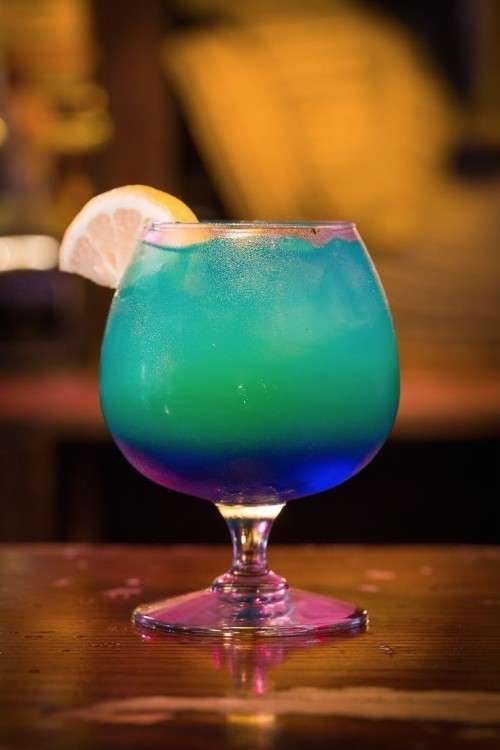
Irish Coffee: an Irish coffee is adding whiskey to coffee and sugar and topping it with cream. As a bartender, I would honestly rather cut my arm off than make one of these.
Baby Guinness: Is a shot made by pouting Tia Maria or Kaluah into a shot glass and spreading Baileys on the top so it looks like a small pint of Guinness.
Silver Bullet: a shot of mixed tequila and sambuca.
Long Island Iced Tea: The Long Island contains vodka, gin, tequila, light rum, lemon juice, triple sec and cola. It has a real kick.
Mai Tai: is made with light and dark rum, lime juice, orange curacao, orgeat syrup and rock candy syrup and served with a mint garnish.
Manhattan: The Manhattan is made with rye whiskey, sweet vermouth and bitters.
Margarita: The margarita is made with tequila, cointreau and lime juice.
Mojito: a mojito is made with muddled mint, white rum, lime juice, simple syrup and soda.
Martini: a martini is made of gin, dry vermouth and garnished with a lemon twist or olives.
Mimosa: a mimosa is a made with sparkling wine and orange juice.
Mint Julep: Made with Kentucky bourbon, simple syrup, mint leaves and crushed ice
Pina Colada: is made with white rum, dark rum, pineapple juice and coconut cream
Screwdriver: Vodka and Orange juice
Tequila Sunrise: tequila, orange juice and grenadine
Tom Collins: made with spiked lemonade, sparkling water, lemon juice, simple syrup and gin
Whiskey Sour: is made with powdered sugar, seltzer, lemon juice and whiskey.
White Russian: made with vodka, coffee liqueur and cream.
Black Russian: made with two parts coffee liqueur and five parts vodka.
Gin and Tonic: gin served with tonic water
Bloody Mary: made with vodka and tomato juice mixed with lemon juice, hot sauce, Worcestershire sauce, horseradish, fresh herbs, brown sugar and cracked black pepper.
Brandy Alexander: served straight up and made with brandy, cognac, creme de cacao and cream
Cosmopolitan: Made with citrus vodka, Cointreau, cranberry juice and fresh lime juice
Daiquiri: made with rum, lime juice and sugar.
Gimlet: gin and lime juice
My Top 10 Bartending Rules and Responsibilities
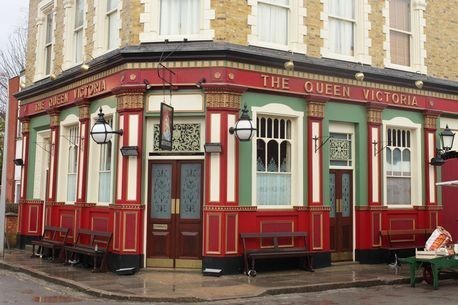
Overpouring is never an option. You can seriously hurt somebody by overpouring, not to mention spoil the drink and ruin your sales. You only serve people what they ask and never more.
When somebody has had enough, you stop serving them. After a while, you know when to cut somebody off.
Never leave bottles on the counter or in reach of customers. Your expensive spirits should never be in reach of anybody but you.
If you tell somebody your selling them premium and top shelf alcohol, you cannot substitute with cheaper licqor. It's illegal.
As a bartender, your eyes always have to be scanning a crowd. You can't leave people hanging.
The golden rule - if you see somebody messing with someone's drink, you chuck it if you can or warn the person. And you get that son of a bitch out of your pub.
50% of the job is cleaning. You have to clean your tools constantly. You cannot reuse measures and spouts, you have to wash everything. Beer traps are clean out every night, rubber mats are washed and anything you have used has to be clean.
You have to hand dry your glasses. You never polish a pint glass as it fucks up the pint. You polish your cocktail glasses, shot glasses and straight glasses.
If someone seems down or on their own, you try make conversation. Often you'll hear some disturbing stuff but always try lend an ear or make everyone feel included.
If you break a glass in the ice bucket, you got to get rid of the ice.

